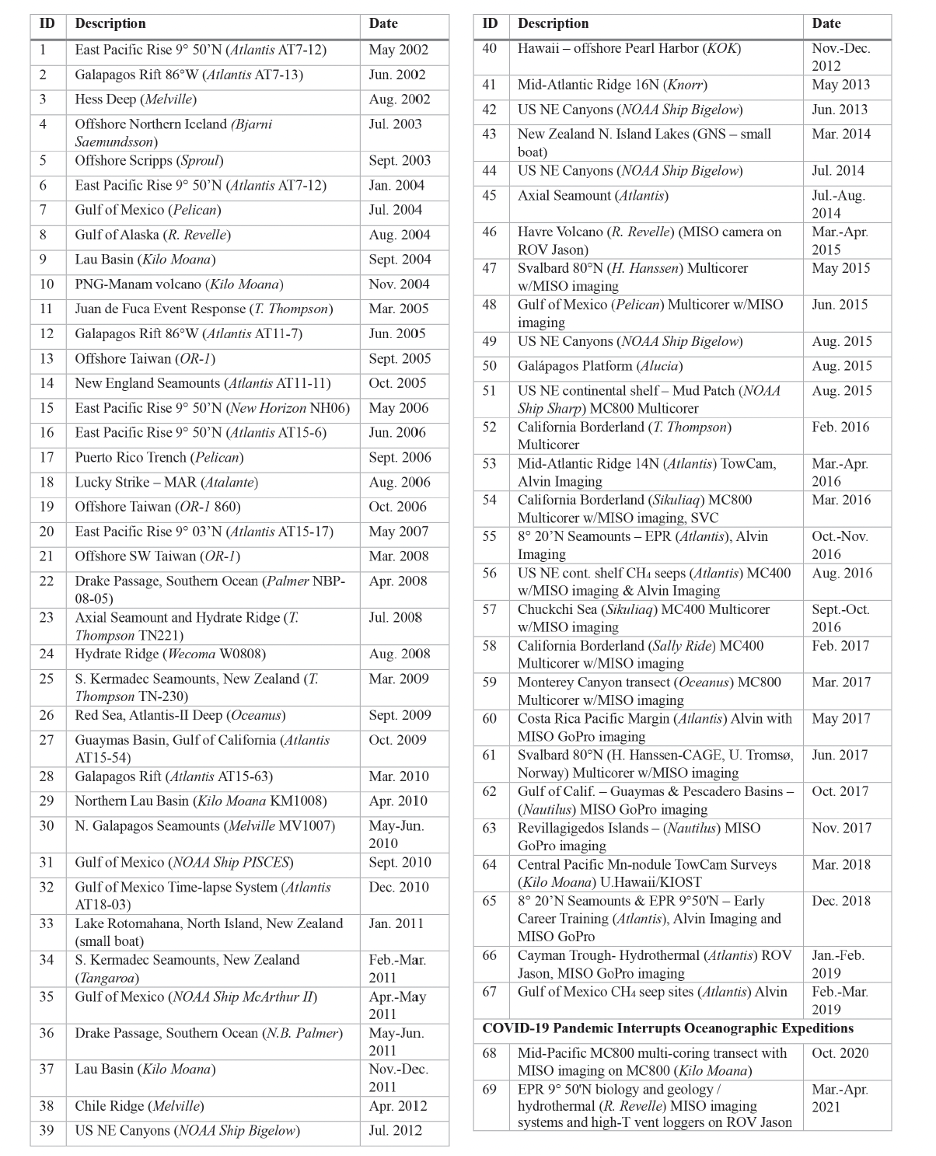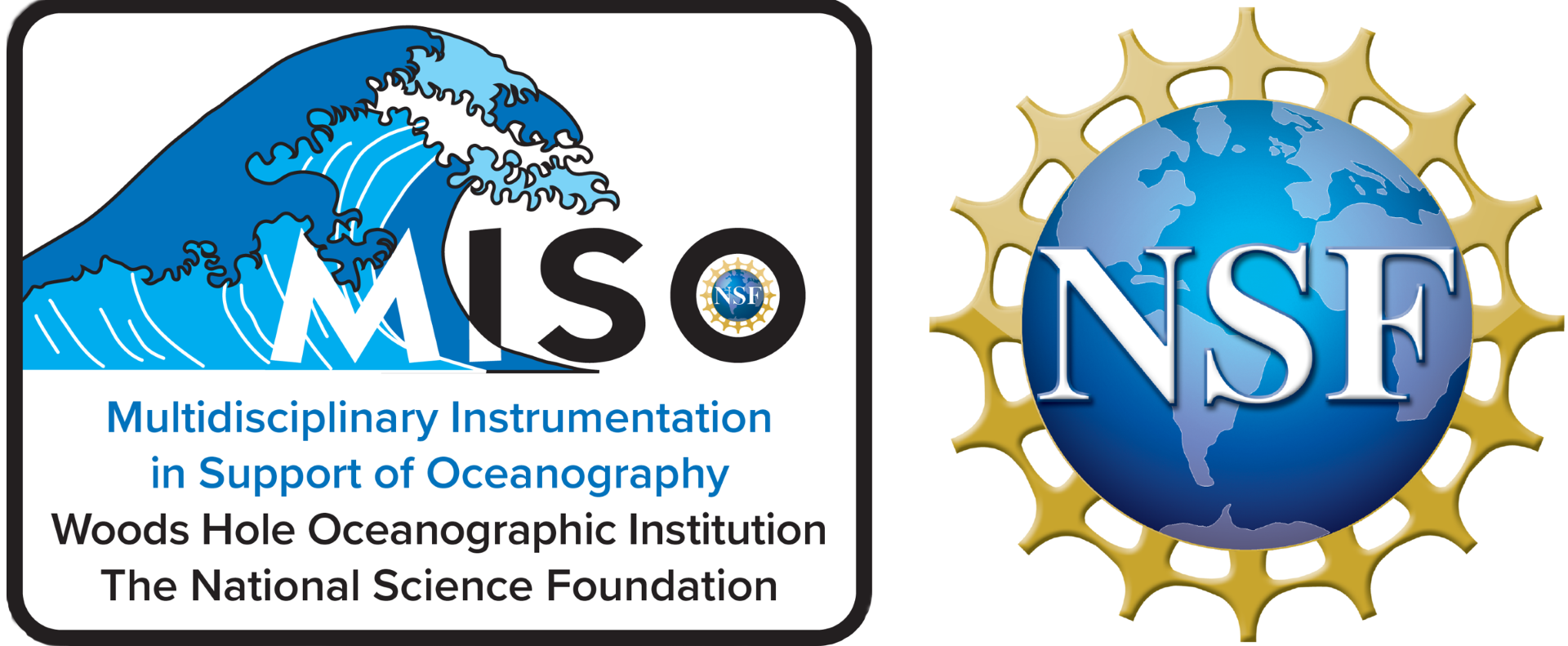What is the MISO Facility?
The primary service function of the Multidisciplinary Instrumentation in Support of Oceanography (MISO) Facility (www.whoi.edu/miso) at the Woods Hole Oceanographic Institution (WHOI) is to assist marine scientists requiring deep-sea digital imaging and sampling capabilities for seafloor experiments and surveys that would be deployed from research vessels in the US academic research fleet (ARF). Over the past >20 years, MISO has been developed and managed by Dan Fornari, and since ~2002, the MISO Facility has been supported by NSF-OCE through 5-year ‘facility’ grants as well as research grants from a variety of US federal agencies, US universities, foreign universities and agencies through investigators that have used MISO instrumentation for field investigations.
MISO focuses on providing excellent, high-resolution oceanographic data sets – primarily deep-sea digital imagery (still and video) and sampling equipment with imaging capabilities- to a wide spectrum of US and foreign investigators conducting geological, biological, chemical and physical oceanographic studies in numerous marine environments to 6000 m depth. To date, MISO has supported 90 field research expeditions throughout the global ocean (Figure 1 and Table 1), many of them coordinated through the University-National Oceanographic Laboratories System (UNOLS).
MISO provides cost-effective, operationally robust, and scientifically relevant access to deep-sea imaging and related equipment for oceanographic research in a wide range of seafloor environments from mid-ocean ridges to continental shelves. MISO equipment is used for a diverse suite of oceanographic investigations ranging from deep-sea coral studies, benthic biology traverses and time-lapse experiments, hydrothermal vent research, mid-ocean ridge and seamount volcanism, time-series experiments in various seafloor environments, and studies of gas hydrates and related seep sites in different tectonic settings. MISO is the only active academic, community-accessible deep-sea imaging facility available to US oceanographers for cost-effective and diverse suites of field investigations requiring deep-sea imaging that can be coupled to seafloor sampling capabilities.
Since 2018, MISO has been integrated into WHOI's Shipboard Scientific Services Group (SSSG), and during 2022-2023 that collaboration has expanded to include substantial interaction and joint seagoing operational efforts with Oregon State University's (OSU) MARSSAM coring and dredging facility. During 2022-2023, there have been several opportunities for training UNOLS tech pool shipboard technicians, as well as WHOI-SSSG and OSU-MARSSAM technicians in operation and maintenance at sea of MISO imaging and data systems. There also continue to be important enabling capabilities that MISO has provided to WHOI’s National Deep Submergence Facility (NDSF) vehicles (Alvin, ROV Jason and AUV Sentry), to improve and expand imaging capabilities for deep submergence science. Additional efforts to expand the reach and application of MISO instrumentation and capabilities to other deep submergence vehicle operators have been ongoing and successful over the past ~5 years (e.g., NOAA-Ocean Exploration- NOAA-OE; Ocean Exploration Trust -OET; and Schmidt Ocean Institute (SOI).
Scientists from the following institutions have used the WHOI MISO TowCam and related MISO instrumentation over the past two decades: Penn State U.; U. Washington; U. Hawaii; Georgia Tech. Univ.; George Mason U.; W. Washginton State U., Temple U., Harvard U., Leghigh U., U. Bergen, Norway, NOAA, Smithsonian Institution, U. Tromsø, Norway, National Taiwan University, Oregon State U.; Taipei, Taiwan, IPGP U. Paris, France; KAUST; Duke University; Navy Research Lab.; Scripps Institution of Oceanography; GNS New Zealand; U. New Hampshire; U. Rhode Island, UC-Santa Cruz; USGS; Stanford U.; Cal. Tech., NOAA-Ocean Exploration, Ocean Exploration Trust, Schmidt Ocean Institute, U. Hawaii, and WHOI. Funding for these activities is provided by US federal agency grants, WHOI internal grants, and occasionally foreign research institutions and funding agencies to support science activities, technology development, and shipboard technical support.



